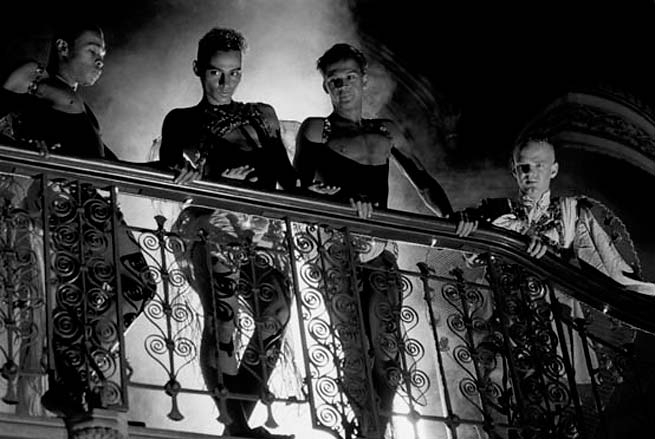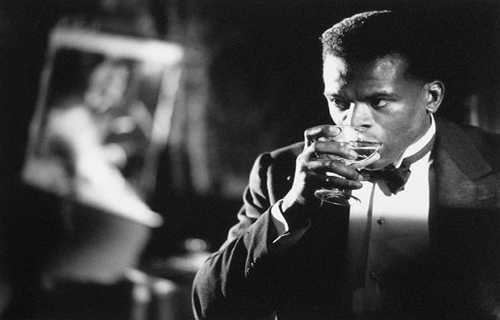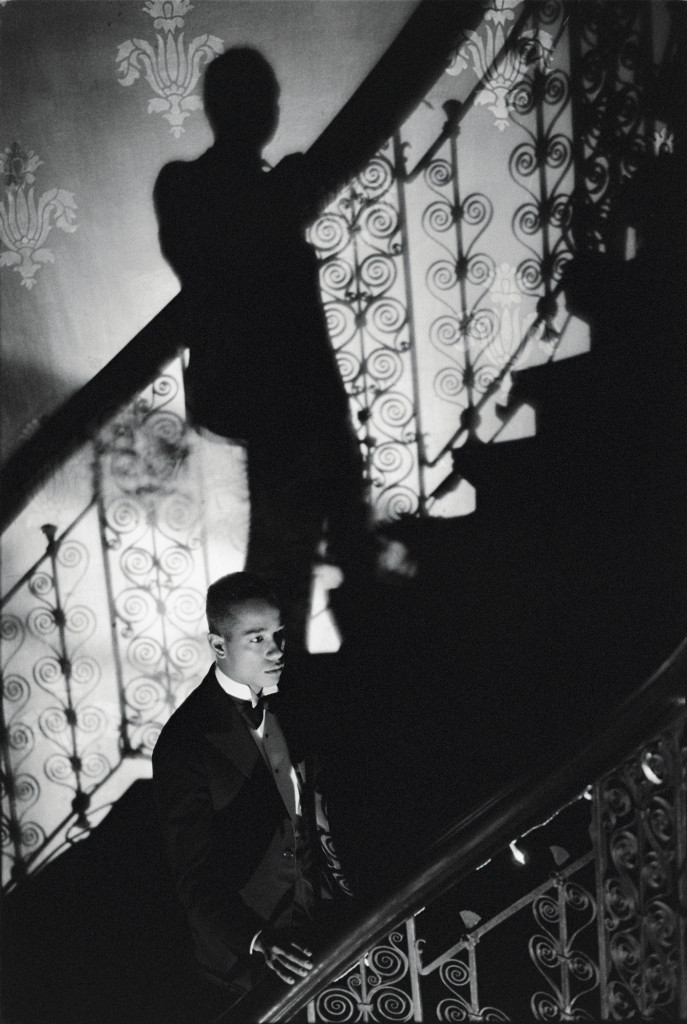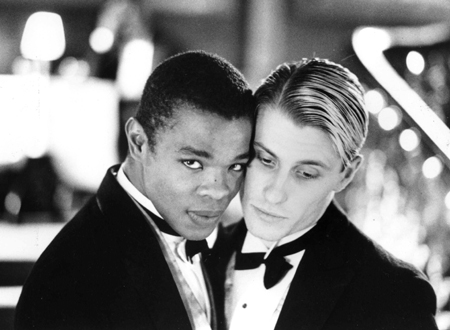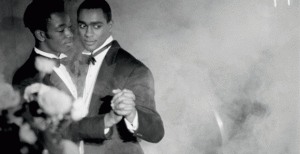
The documentary film ‘Looking for Langston’ (1989) is in the collection of the Centre Pompidou in Paris. The museum bought the work in 2000. ‘Looking for Langston’ was (and perhaps is) controversial because it is based on the life of Harlem Renaissance poet Langston Hughes and assumes that he was gay. There is no 100% proof for it.
This work was the beginning of a very successful career of Julien. For more information go to www.metropictures.com, his gallery in New York.
Eros Cruises the Museum In a Filmmaker’s Dreams
By HOLLAND COTTER
Published: November 24, 2000
The British artist and independent filmmaker Isaac Julien, 40, is best known in this country for his rhapsodic ”Looking for Langston,” which made a beleaguered appearance at the New York Film Festival in 1990. Based on the figure of the African-American poet Langston Hughes (1902-1967), this was no plodding Hollywood bio-pic but a floridly seductive reverie on what it meant — what it means — to be black, beautiful and homosexual in America.
Most previous portraits of Hughes had tiptoed around the question of his sexual orientation, as if to preserve the integrity of an icon. Mr. Julien addressed it head-on, and the boom, predictably, fell. The Hughes estate threatened to sue if any of the poet’s work was quoted in the film, forcing last-minute editing that left stretches of silence on the soundtrack.
The funny thing is that Hughes, were he alive now, would probably love this shrewd, sexy tribute. It neither makes a hero of him nor diminishes him as a person. It pushes no overt political envelopes, though it is intensely political. Most important, it is pure poetry: a docu-dream-drama with an interracial cast of hunks and angels and a tone as sad and fevered as a late-night love song.
Mr. Julien has gone on to make other films, including one on the revolutionary political thinker Frantz Fanon. And in the process he’s helped to redefine film as an art genre. Through his use of stylized movement and tableaux vivants he has linked the medium with painting and performance art. So it’s no surprise that he has increasingly geared his output to gallery exhibition.
Looking for Langston (fragment from review in cineAWESOME)
Rufus de Rham — June 8, 2011
Looking for Langston is Isaac Julien’s 1989 short film which combines archival footage of the Harlem Renessanice with scripted fictional scenes. It celebrates freedom of black gay culture during the 1920s in Harlem.
Looking for Langston (…) represents not only a celebration of black gay culture, but also seemingly captures the complex dynamic between black British and black Americans. A British film, by a British director, but it celebrates American black culture. It is a film lensed by Nina Kellgren with sensuality not only for the beautiful bodies and compositions on display, but also for the freedom that they represent. The film starts with a funeral, ostensibly Langston Hughes but really Isaac Julien himself, and ends with a disco interrupted by white police. What is in between is beautiful. The film is highly experimental but the basic plot is Alex (played by Ben Ellison) lusts after Beauty (Matthew Baidoo), who he had seen in a club. The film is dream like in structure and style, from the ephemeral Cotton Club stand in where men dance openly with each other to the scene in which Beauty walks through sheets with Robert Maplethorpe images projected onto them.
The archival footage (including footage from Oscar Micheaux films) melds into this constructed reality while voices read the poems of Hughes, Essex Hemphill, Bruce Nugent, Hilton Als, and James Baldwin. The Baldwin poem is even read by Toni Morrison.
In the dark we don’t have to say “I love you”
The dark swallows it,
And sighs like we sigh
when we rise from our knees.
I am lonely for past kisses
wild lips certain streets breed for pleasure…
Reads a voice from Hemphill as Alex and Beauty circle and meet and circle again. Here we see the ambiguity of sexuality among the artistic elites at the time. It was a freedom that was intertwined with cultural power, which is, perhaps in itself, just another prison. More of a visual poem than a strict narrative, this film posits that sex is a necessary component to art and in a way revolution. This is a complex film that unfolds itself with each subsequent viewing. I cannot recommend it enough, even if you watch it once for the luscious cinematography on display.

